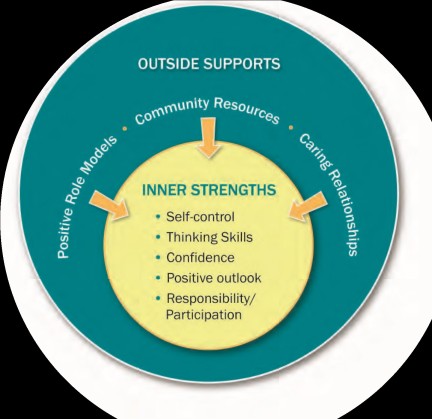
I attended a talk today by Reclaiming Bay Area futures. The talk was adapted from UCSF Healthy Environments and Response to Trauma in Schools (HEARTS) Curriculum. Great tools and strategies were shared to better create classrooms and as effective practitioners of Trauma-informed practices.
PPTs
Building on a PBIS Multi-Level System of Support to Create Trauma-Sensitive Schools
Resources
TRAUMA-SENSITIVE SCHOOLS: RESOURCES Compiled by Joyce Dorado, PhD, Director, UCSF HEARTS
Building Trauma-Sensitive Schools Handout Packet
The Heart of Learning and Teaching: Compassion, Resiliency, and Academic Success
Creating and Advocating for Trauma-Sensitive Schools
Child Trauma Toolkit for Educators – The National Child Traumatic Stress Network (2008)
Helping Traumatized Children Learn 1 – Supportive School Environments for Children Traumatized by Family Violence – Massachusetts Advocates for Children in collaboration with Harvard Law School and the Task Force on Children Affected by Domestic Violence. (2005) http://www.traumasensitiveschools.org.
Helping Traumatized Children Learn 2 – Trauma and Learning Policy Initiative – a Partnership of Massachusetts Advocates for Children and Harvard Law School (2013) http://www.traumasensitiveschools.org
Michigan- Trauma Informed Care Toolkit
NASP – Trauma Sensitive Schools
BIG LIST- Resources for Beginning Trauma-Informed Practices
The Language of Trauma and Loss provides teachers with information about the effect of trauma and loss on children, and the teacher’s role in identifying and referring appropriate students. The program also helps teachers establish a “safe” classroom and improve language arts skills using trauma and loss as a vehicle. The first video offers professional development information for teachers. The other three videos are age-specific for elementary, middle school and high school students, and are to be used as a vehicle to help students express their concerns. From PBS Link
Articles
Creating Trauma-Sensitive Classrooms Preschool-3rd grade
Creating a Trauma-Sensitive Classroom
Values for a Trauma-Informed Care Culture in Your Classroom and School, ACES in Education, August 2017
Dr. Daniel Siegel Presenting a Hand Model of the Brain – This is an excellent video depicting how you could explain the brain to students and adults. “upstairs and downstairs brain”. Another version by Dr. Siegal, (a little longer) is called “Flipping Your Lid:” A Scientific Explanation.
Why Schools Need to Be Trauma Informed – Oehlberg, B. (2008) Trauma and Loss, Research and Interventions V8N2 Fall/Winter
Unlocking the Door to Learning: Trauma-Informed Classrooms & Transformational Schools – McInerney, M. and McKlindon, A. (2014)
Books
The Trauma-Informed School: A Step-by-Step Implementation Guide for Administrators and School Personnel by Jim Sporleder and Heather T. Forbes LCSW.
The Heart of Learning and Teaching: Compassion, Resiliency, and Academic Success
Creating Cultures of Trauma-Informed Care (CCTIC): A Self-Assessment and Planning Protocol
Help for Billy: A Beyond Consequences Approach to Helping Children in the Classroom by Heather T. Forbes, LCSW
The Boy Who Was Raised as a Dog: and other stories from a child psychiatrist’s notebook–what. traumatized children can teach us about loss, love by Bruce D. Perry, M.D., Ph.D.
Reaching and Teaching Children Who Hurt: Strategies for Your Classroom by Susan E. Craig
Checklist/ Tools
Trauma-Sensitive School Checklist
New Orleans Trauma-Informed Schools Environmental Scan Checklist
Videos and Films
Why we need Trauma-Sensitive Schools?
Children, Violence, and Trauma Interventions in School
Creating a Culture of Compassion in Schools
Transitioning to Trauma-Informed Practices to Support Learning
How Childhood Trauma Affects Health Across a Lifetime
Resilience – The Biology of Stress and the Science of Hope
Online Training Trauma-Informed Care Resources
Trauma Training for Educators.
This resource comes from the Community Schools of Central Texas. This can be used as professional development with a group, or by individuals. I have used pieces in day long professional development. After sharing with a former colleague who teaches at a local university, I’m told that all of their new teacher candidates now view this training. “This is a free training resource designed to give anyone who works with children important trauma-focused information about how student learning and behavior is impacted by trauma and how educators and support staff can help students develop a greater sense of safety at school and begin to build new emotional regulation skills.”
Trauma-Sensitive Schools Learning Modules
This wealth of information comes from the Wisconsin Department of Public Instruction. It consists of 14 modules that can be completed online. These modules can be accessed individually. It follows a PBIS format, “focusing first on universal practices (Tier 1), followed by strategies for students who need additional support (Tier 2), and intensive interventions for students who require ongoing support (Tier 3).”






